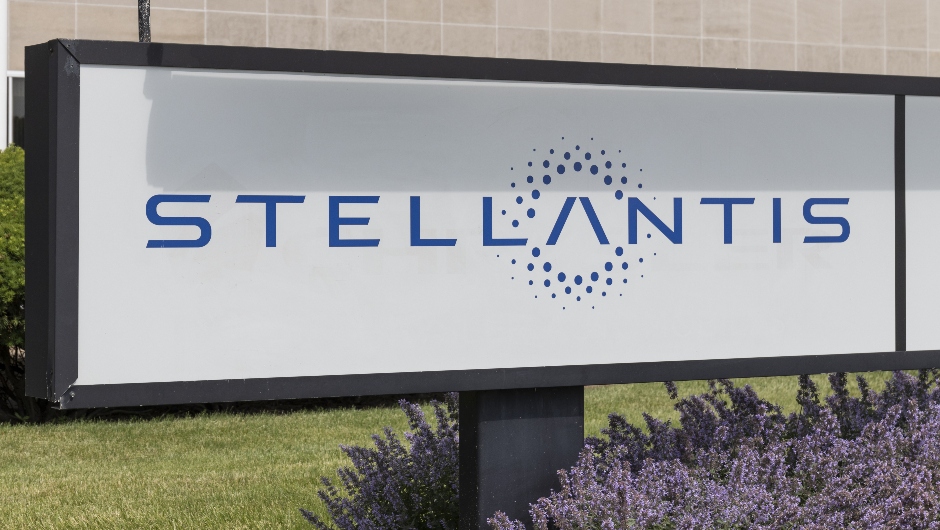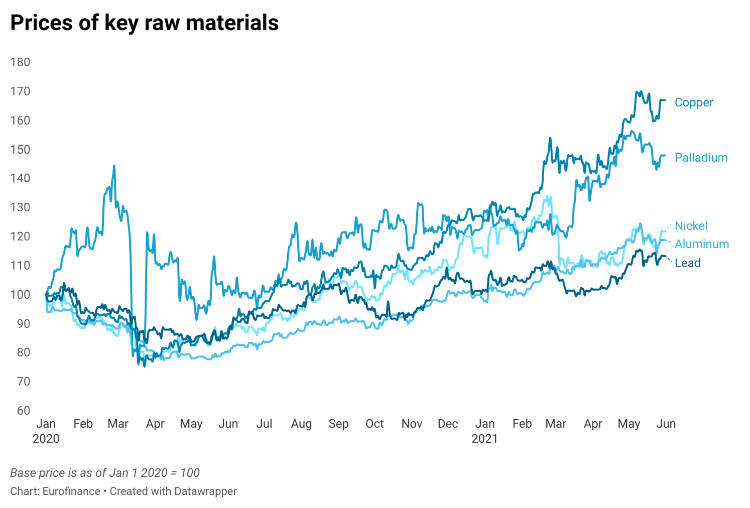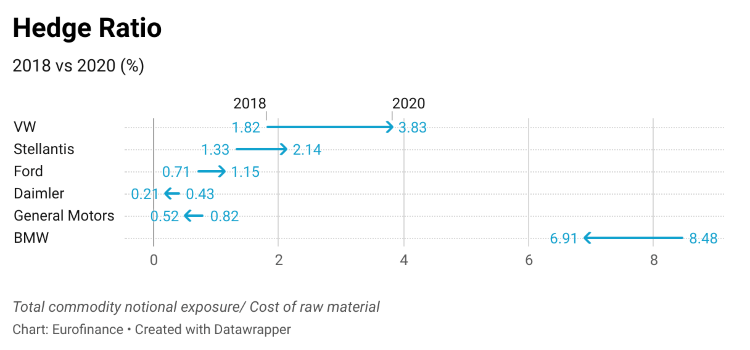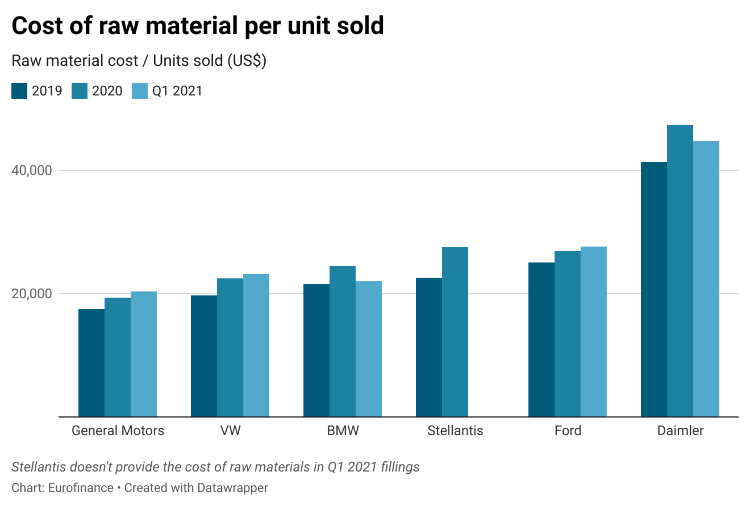Volkswagen makes a €1.4 bn gain on commodity hedging

Automobile giants bought an additional $545 mn hedges to stave off commodity surge
Car manufacturing is a commodity-intensive business, and hedging decisions by treasury teams are creating winners and losers among the global carmakers as the rebound from the pandemic leads to a spike in raw material costs.
This year, Volkswagen is emerging as a clear winner as it books a €1.4 billion gain on commodity derivatives amassed in 2019. While VW is flattered by its choice of accounting treatment, the results are more mixed for its competitors including BMW, General Motors, Daimler, Ford and Stellantis. While these automobile giants ramped up their commodity derivatives notional by $545 million in the first quarter of 2021 to a total of $13.3 billion, they may have left it too late to make a significant difference.
The rise in hedging came during a time when the prices of metals used as raw materials for production touched stratospheric levels. Commodities including copper and palladium surged 67% and 48% respectively from January 2020, while the IMF metals index for industrial inputs stood at a 10-year high in May 2021.

Totalling €6.5 billion at the end of 2020, Volkswagen doubled its commodity derivatives portfolio in a span of two years, putting a third of the hedge against nickel as the company increased its notional holding almost tenfold to €2.3 billion. The move proved to be well-timed when nickel prices touched $19,800 per MT in February 2021, a level last seen in April 2014.
The company gave a hint about its strategy in its 2019 annual report, “We expect the prices of most commodities to rise in 2020. For the years 2021 to 2024, we continue to expect volatility in the commodity markets with prices trending upwards.” After a €0.9 billion fair value loss in the first half of 2020 as the prices tumbled sharply at the onset of the pandemic, the strategy reaped rewards for VW as it recorded a €1.4 billion hedging gain in the first quarter of 2021.
The company saw its cost of raw material per unit sold surge by 6.7% to €19,800 in Q1 2021, as per an analysis by Eurofinance and the management reiterated its view on commodity prices during an earnings call on 6 May. “We probably will see some short-term squeezes, shortages [in raw materials]” said Herbert Diess, CEO at VW. However, the company is well placed to tackle cost hikes as it increased its hedge ratio by 200bps since 2018, maximum amongst its competitors.

Hedge vs fair value accounting
On the contrary, VW’s Germany based rivals BMW and Daimler reduced notional commodity derivatives by 9% and 42% respectively during 2020. However, in the case of BMW, the benefit of its €3.2 billion notional commodity derivatives portfolio – the largest hedge ratio as a percentage of raw material costs after VW – was disguised by the use of hedge accounting. Unlike VW which elected to use a fair value treatment for commodity derivatives, mark to market gains at BMW are offset against underlying exposures and reported in shareholders’ equity.
BMW equity increased by €726 million in Q1 2021 partly as a result of commodity hedging, reducing pressure on earnings. According to a BMW spokeswoman, “In Q1-21 the raw material impact in the cost of sales was limited to a high double digit million EUR amount, fully compensated by positive effects from derivatives”.
However, the expiry of commodity hedges poses a risk for BMW if inflation fails to subside in the near future. The company highlighted a mid to high three digit million euro risk from commodity inflation in 2021 in its Q1 earnings call.
“In the 2nd half of this year and in subsequent years, existing raw material hedges will continue to partially compensate negative spot price effects” the spokeswoman told EuroFinance. “However, headwind from raw material prices will increase during the course of the year, as the nominal amount of the hedged risk reduces subsequently”.
Daimler group also uses hedge accounting for commodity derivatives. Elevated commodity prices leave the group in a delicate situation as its unhedged position of the forecasted commodity purchases raised to 80% in 2020 as compared to 55% a year before, resulting in a drop in mark-to-market gains from commodity hedges to €30 million from €114 million during the same time period.
“We see slightly higher cost for raw material as well as supply chain constraints and logistic costs” said Harald Wilhelm, CFO at Daimler on a 23rd April conference call.

Detroit-based automobile giants, General Motors and Ford increased their commodity notional derivatives to $631 million and $1446 million respectively at the end of Q1 2021, registering a 85% and 11% rise from the previous quarter. This escalation came at the back of cautiousness expressed by the management regarding high commodity prices and supply bottlenecks during the Q1 earnings call.
“We’re going to see a significant headwind from commodities. We saw very little commodity impact in Q1. That’s because we still had our contracts from last year in place and we had our hedging.” said John Lawler, CFO at Ford.
“We’ve seen the commodity prices increase primarily for aluminium, steel and in precious metals; we expect to see about a $2.5 billion increase in commodities Q2 through Q4.”
Management at General Motors also signalled cost pressures in its Q4 2020 earnings calls as it expects a $2 billion impact from commodity inflation during 2021. In spite of rise in notional derivatives, the company mentioned that the gain/loss from commodity derivatives was insignificant during the first quarter of 2021.
FX eases pain

For European companies with exposure to dollar-denominated commodity cost, currency risk has eased the challenge as the Euro appreciated 5% against the Dollar since the start of 2020. BMW and Daimler reduced their notional FX hedges to record low levels resulting in a decline in their FX hedge ratio to 19% and 33% at the end of 2020. VW on the other hand, saw its sensitivity to hedging reserve from a decline in EURUSD drop to -€75m in 2020 as compared to -€980 a year ago.
Daimler did not respond to a request for comment.